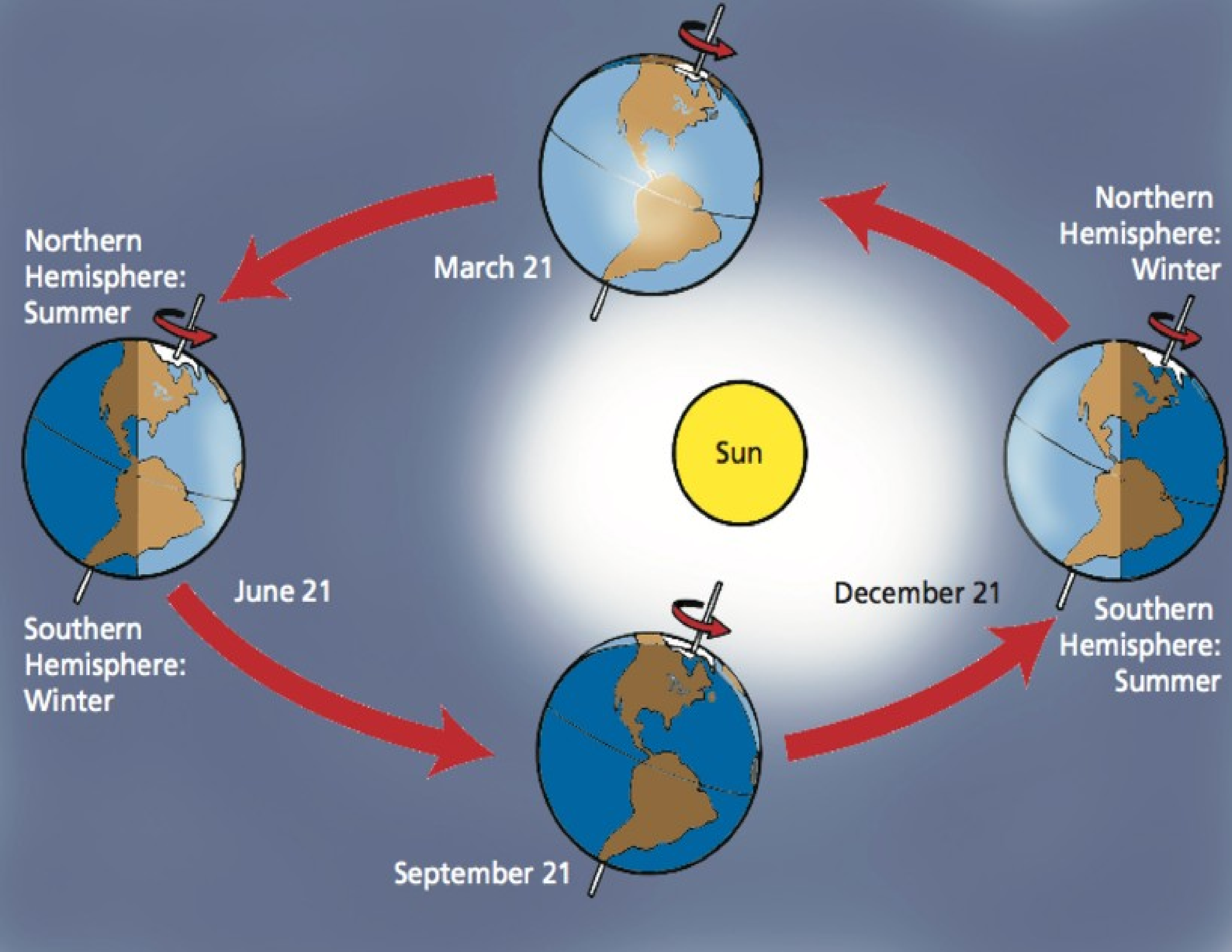Section 10.2 The Seasons

1
www.visualcapitalist.com/cp/visualizing-earths-seasons/ Earth’s axis is tilted at an angle of about 23.5 degrees relative to its orbit around the Sun. As Earth orbits the Sun, different parts of the planet receive varying amounts of sunlight depending on the angle of the Sun’s rays Figure 10.2.1. During the summer months in the Northern Hemisphere, the North Pole is tilted toward the Sun, and the Sun’s rays hit the Northern Hemisphere at a more direct angle, providing more heat and longer daylight hours. At the same time, the South Pole is tilted away from the Sun, resulting in shorter days and cooler temperatures in the Southern Hemisphere. During the winter months in the Northern Hemisphere, the North Pole is tilted away from the Sun, and the Sun’s rays hit the Northern Hemisphere at a more indirect angle, providing less heat and shorter daylight hours. At the same time, the South Pole is tilted toward the Sun, resulting in longer days and warmer temperatures in the Southern Hemisphere. These changes in the angle of the Sun’s rays as Earth orbits around the Sun cause the seasons to occur season animation. The distance between the Earth and the Sun does have an effect on the amount of solar radiation that the Earth receives, but it is not the main factor that determines the seasons. The primary factor that determines the seasons on Earth is the tilt of its axis.
2
astro.unl.edu/classaction/animations/coordsmotion/eclipticsimulator.htmlSolstices and equinoxes are important astronomical events that mark the changing seasons on Earth. Solstices occur twice a year, around June 20-22 and December 21-23, and mark the points in the Earth’s orbit around the Sun when one of the Earth’s poles is tilted most directly towards or away from the Sun. During the June solstice, which marks the beginning of summer in the Northern Hemisphere and winter in the Southern Hemisphere, the North Pole is tilted towards the Sun, resulting in the longest day of the year in the Northern Hemisphere and the shortest day in the Southern Hemisphere. During the December solstice, which marks the beginning of winter in the Northern Hemisphere and summer in the Southern Hemisphere, the South Pole is tilted towards the Sun, resulting in the longest day of the year in the Southern Hemisphere and the shortest day in the Northern Hemisphere.
Equinoxes occur twice a year, around March 20-21 and September 22-23, and mark the points in the Earth’s orbit around the Sun when the tilt of the Earth’s axis is not inclined towards or away from the Sun. During the March equinox, which marks the beginning of spring in the Northern Hemisphere and autumn in the Southern Hemisphere, the plane of the Earth’s equator passes through the center of the Sun, resulting in equal amounts of daylight and darkness all over the world. During the September equinox, which marks the beginning of autumn in the Northern Hemisphere and spring in the Southern Hemisphere, the plane of the Earth’s equator passes through the center of the Sun again, resulting in another day of equal daylight and darkness all over the world.
